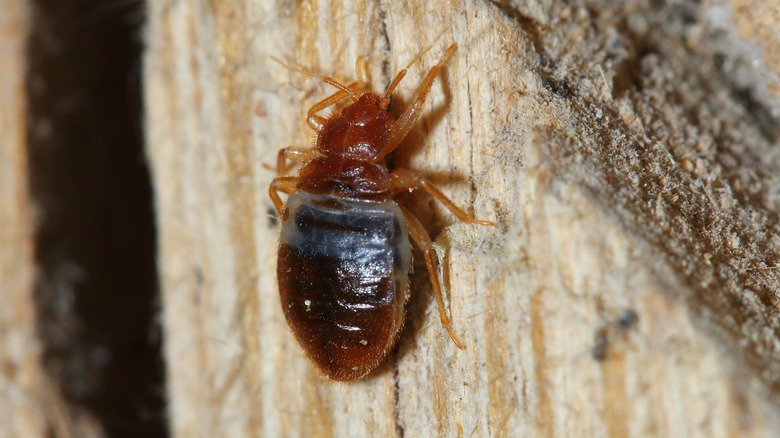The Bed Bug Lookalike That May Be Lurking In Your Attic
If you've recently noticed mysterious bites but can't pinpoint the source, you might be dealing with a lesser-known but still-frustrating pest; the bat bug. Bat bugs, often mistaken for their notorious counterparts, bed bugs, share a striking resemblance but differ in their habits and preferences. Unlike bed bugs, bat bugs primarily feed on bats and often reside in higher ground, like attics. Their preference for lofty habitats means they're less likely to be found in mattresses and bedding. These critters bear a striking resemblance to bed bugs but a closer examination reveals subtle differences. They have longer hairs on their thorax, a distinction visible under a microscope, according to WebMD. In terms of breeding habits, they reproduce rapidly, with females laying up to 20 eggs after a single feeding. However, without their preferred blood meal from bats, their reproduction slows significantly.
In the absence of their preferred bat hosts, these bugs may descend to lower levels of your home. When bats are not available, they might resort to biting humans before retreating to their hiding places. This behavior makes them elusive, leading many to mistakenly believe they're dealing with a bed bug infestation. The good news is that bat bugs cannot thrive on human blood alone. However, recognizing the signs of their presence is vital for effective control and eradication. It also helps to understand more about the various insect elimination methods available.
Spotting a bat bug infestation
In the quest to identify a bat bug infestation, several signs can alert you to their presence. Beyond the itchy bites and seeing the bugs themselves, there are other indicators to be mindful of. One such sign is an unusual amount of insect debris. These insect skins often accumulate in the hidden nooks and crannies of your home or the seams of mattresses and furniture. If you're finding these often, it's time to inspect for bat bugs. Additionally, you might discover evidence of their lifecycle. This includes tiny white eggs in secluded areas. Bat bug eggs are minuscule and oval-shaped, often tucked away in cracks and crevices. Their presence is a sure sign of a breeding population and warrants immediate attention.
Another indicator is dark spotting or staining on your linens, upholstery, or walls. Furthermore, an increase in bat activity around your home can also signal a potential bat bug problem. Since these bugs primarily feed on bats, their presence often correlates with bat populations in the vicinity. Pay attention to bats entering or exiting your home, especially in areas like the attic. This could mean bat bugs are not far behind. Lastly, a musty odor in areas of infestation is another subtle yet telling sign.
Tackling bat bug infestations
Just like getting rid of bed bugs, eliminating bat bugs can be tricky. With the right approach, though, you can reclaim your home. First and foremost, identify and remove the primary host; bats. Ensure your home is bat-free. This may involve sealing off entry points and consulting wildlife control professionals as bats are a protected species in many regions. Remember, it's about humane and legal removal, not harm. Next, focus on the bat bugs themselves. Professional pest control services are often the most effective way to deal with an infestation. These experts can identify the problem areas, apply appropriate treatments, and advise on preventing future infestations. They have the tools and knowledge to tackle these pests thoroughly.
In tandem with professional help, you can take steps at home too. Regular vacuuming, especially in areas where you've spotted bats (or bugs), may help reduce the population. Pay special attention to cracks and crevices where these bugs might hide. After vacuuming, always dispose of the vacuum bag immediately and outside your home to prevent re-infestation. Additionally, consider using mattress encasements. These can trap any bugs hiding in your mattress and prevent new ones from getting in. While this won't eliminate the problem, it can significantly reduce the chances of getting bitten. Lastly, ongoing vigilance is essential. Regular inspections and maintenance can help prevent future infestations. This means staying alert to the signs of bat bugs and addressing potential bat entry points promptly.


